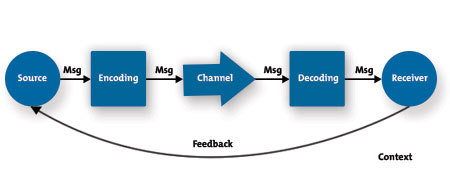Process of Communication
 |
| The Communication Process |
Conscious or intended communication has a purpose, we communicate because we want to make someone, something, or take some action or think or feel in way.
Sender/Source:
1) Initiates the process of communication.
2) He/She has to be clear about the process of communication.
3) He/She has to be clear about target audience. The sender has to decide about putting the message content into words and symbols which can be easily understood by the receiver this process of putting ideas into symbols is called encoding.
Message:
Message is the content or the matter which the sender wants to send across to the receiver. He/She constructs the message according to the understanding level of the receiver.
Medium/Channel:
The choice of the medium is a function of the sender. It depends on several factor like
1) Urgency of the message.
2) Availability and effectiveness of the medium.
3) Relationship between the two communicants.
Receiver:
The receiver attends to the message and decodes the words or symbol into ideas. The process of decoding is the reverse of encoding. This means that the meaning a receiver gives to the words is influenced by his/her knowledge, intelligence, fast experience and relation with the sender. If the sender and the receiver have a common field of experience, the receiver understanding of a message will be closer to what the sender intended.
The receivers function are:
1) Attending to the message.
2) Interpreting.
3) Evaluating the message.
4) Storing.
5) Recalling.
6) Responding.
Feedback:
It is the knowledge of the receiver response to our communication. It can be use to modify the communication method to make it more effective.
For the communication to be complete, the sender must know whether the receiver has got the message, understand it in the way it was intended, and has receive it well . This is possible only on getting an change to see the reaction and response of the receiver.
When we receive and understand a message, we react and respond to it. We may reply, or behave in a particular way or takes some action as a result of a message. Feedback is useful for both the sender and the receiver.
Environment:
Communication take place in an environment or context. It includes elements like the situation, the place, the time, the circumstance of each communicant and the relationship between the. The context influences the sender's encoding and the receivers decoding. Each ones interpretation is influenced by it.



